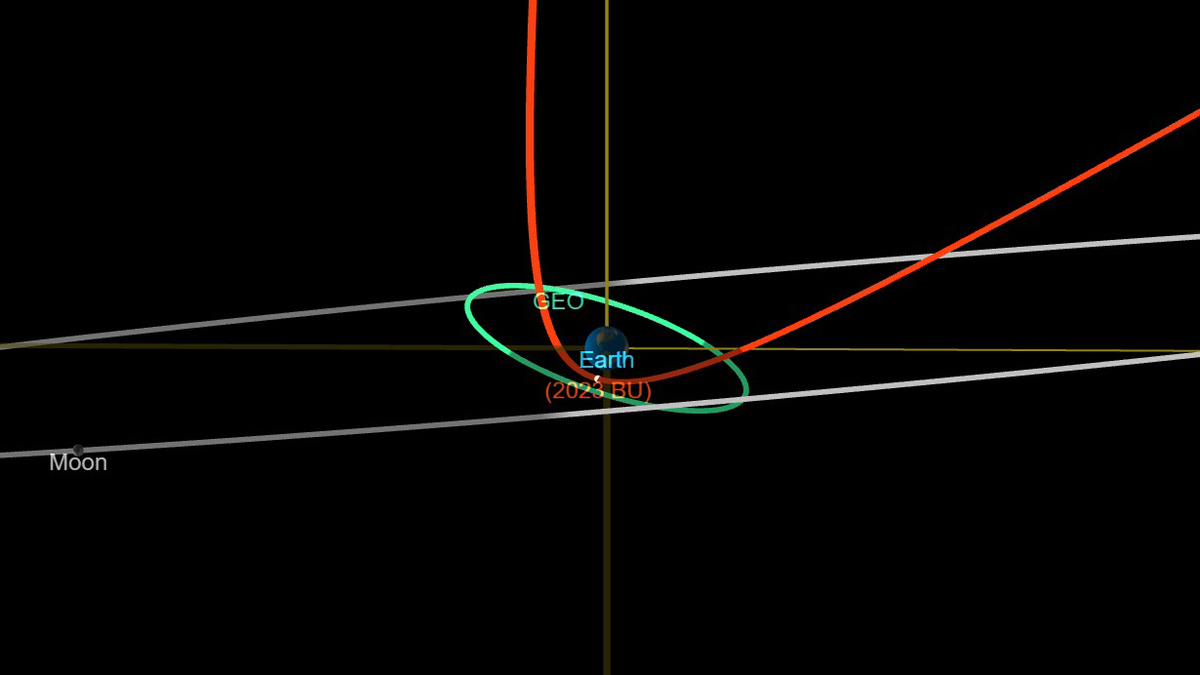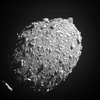[ad_1]

Asteroid 2023 BU will streak about 2,200 miles above the Earth’s surface on Thursday night. Its path is seen here in an image from NASA’s Scout impact hazard assessment system. The moon’s path is in gray.
NASA/JPL-Caltech
hide caption
toggle caption
NASA/JPL-Caltech

Asteroid 2023 BU will streak about 2,200 miles above the Earth’s surface on Thursday night. Its path is seen here in an image from NASA’s Scout impact hazard assessment system. The moon’s path is in gray.
NASA/JPL-Caltech
There’s no reason to panic — an asteroid will shoot past our planet harmlessly Thursday night, NASA says. But still, the space agency says the object — the size of a large moving truck — will make one of the closest approaches to Earth ever when it zips over the Southern Hemisphere.
NASA describes it as “a very close encounter with our planet.”
The asteroid, dubbed 2023 BU, will be only 2,200 miles above the Earth’s surface when it passes over South America’s southern edge at 7:27 p.m. ET, NASA says.
For comparison, that’s a little shorter than a straight-line trip from New York City to Las Vegas, which is about 2,230 miles through the air.
“In fact, this is one of the closest approaches by a known near-Earth object ever recorded,” said Davide Farnocchia, a navigation engineer at NASA’s Jet Propulsion Laboratory in Southern California, as the agency announced the close passage.
Even if it did hit our planet — which it won’t, scientists repeat — the small asteroid’s main effect would be visual, at it would become a fireball in our atmosphere, with some debris likely falling as small meteorites.
The asteroid is arriving on short notice: 2023 BU was just discovered on Saturday by Crimean amateur astronomer Gennadiy Borisov, who has previously been credited with discovering a number of comets and asteroids, including the first confirmed interstellar comet.
NASA’s Scout system, which assesses potential hazards, quickly determined that 2023 BU wouldn’t hit Earth but “make an extraordinarily close approach,” said Farnocchia, who developed the system.
News of the looming visit comes at a time when NASA has put new emphasis on planetary defense, detecting and analyzing objects that could pose an impact hazard. Last year, it even tested a just-in-case plan to ram an asteroid, if it someday becomes necessary to redirect an object away from Earth.
2023 BU is much smaller than many other close-passing asteroids that have made headlines in recent years, one of which was “the size of two Rose Bowl stadiums.” But this asteroid is also coming much closer to our planet: some of those other objects stayed tens or hundreds of thousands of miles away.
The asteroid’s visit will bring it well within the cloud of geosynchronous satellites around Earth, getting around 10 times closer to the planet’s surface than those objects, which maintain a high orbit.
[ad_2]
Source link




Comments are closed.